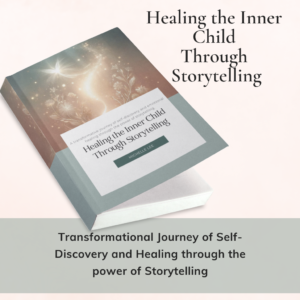
Article-at-a-Glance
Nature therapy, often referred to as ecotherapy, involves engaging with natural environments to promote physical and mental health.
Scientific research supports the benefits of nature therapy, including stress reduction, improved mood, and enhanced cognitive function.
Activities like forest bathing, gardening, and simply spending time in green spaces can be part of nature therapy.
Implementing nature therapy into daily life can be simple and accessible, even for those living in urban environments.
Personal stories and clinical research underscore the transformative power of nature on health and well-being.
What Is Nature Therapy?
Imagine yourself walking through a lush green forest, the sound of leaves rustling in the gentle breeze, the earthy scent of the soil filling your nostrils. This is nature therapy at its core—immersing oneself in the natural world to heal and find peace. Also known as ecotherapy, this practice involves direct engagement with nature to promote mental and physical well-being. It’s not just a walk in the park; it’s an intentional act of connecting with the earth to rejuvenate your spirit.
Whether it’s tending to a garden, hiking through the woods, or simply sitting by a babbling brook, nature therapy takes many forms. The underlying principle is the same: nature has inherent healing properties that, when accessed, can lead to profound health benefits. So, let’s lace up our boots and dig into the science that backs up what many of us have instinctively known for ages—nature heals.
Why Science Endorses Green Time
There’s something undeniably soothing about being in nature. It turns out, this feeling isn’t just a fleeting sentiment; it’s rooted in science. Numerous studies have shown that spending time in natural environments can lower cortisol levels—the hormones associated with stress. But it doesn’t stop there. Engaging with nature has been linked to reductions in anxiety, improvements in mood, and even better cognitive functioning.
What’s more, researchers have found that natural settings can act as a buffer against mental health conditions. It’s no wonder that healthcare professionals are increasingly recommending nature therapy as part of treatment plans. And the best part? It’s accessible to everyone. Whether you have a sprawling backyard or a small potted plant on your windowsill, nature therapy is within reach.
Top Benefits: How Nature Mends Body and Mind
Now, let’s delve deeper into the specific ways nature therapy can mend our bodies and minds. It’s not just about feeling good in the moment—regular engagement with natural spaces can lead to long-term health benefits. Here’s how:
Stress Reduction Secrets in Natural Spaces
When we step into nature, our bodies respond in remarkable ways. Our heart rate slows, our blood pressure drops, and our stress hormones plummet. This isn’t just relaxation—it’s a physiological response that promotes healing. For instance, forest bathing, a practice originating in Japan known as shinrin-yoku, involves simply being in the presence of trees. It has been shown to significantly reduce stress and even improve sleep quality.
Find a quiet spot in nature where you can be undisturbed for at least 20 minutes.
Leave your phone behind or turn it off to fully immerse yourself in the experience.
Engage all your senses—listen to the sounds, breathe in the scents, and feel the textures around you.
Practice deep breathing to enhance the calming effects of your surroundings.
Regularly schedule time for these nature breaks to maintain the stress-reducing benefits.
It’s not just about escaping the hustle and bustle of daily life; it’s about giving our bodies and minds the chance to reset and heal. And the beauty of nature therapy is that it’s a free resource available to all, requiring nothing more than a willingness to step outside and breathe.
Stress isn’t the only thing nature helps to alleviate. Contact with the natural world has been shown to boost our physical health in a variety of ways. From the increased vitamin D we get from sunlight to the physical activity often involved in getting outdoors, nature therapy contributes to our overall health in ways we’re just beginning to fully understand.
Physical Health Boosts from the Great Outdoors
Beyond mental health, nature therapy offers a wealth of benefits for our physical health. Regular exposure to natural environments has been linked with a stronger immune system, which is crucial for fighting off illnesses. Additionally, activities in nature often involve physical movement, whether it’s a gentle stroll or a vigorous hike, which can improve cardiovascular health and increase muscle strength.
Moreover, nature has a way of promoting healthier lifestyle choices. When we spend time outdoors, we’re more likely to engage in physical activities instead of sedentary pastimes. Plus, the exposure to diverse plant life can inspire a greater interest in a plant-based diet, which has its own set of health benefits. So, when we talk about nature therapy, we’re looking at a holistic approach to health that touches every aspect of our well-being.
The Nature Prescription: Implementing Green Healing in Daily Life
So, how do we make the most of nature’s healing powers in our daily lives? The good news is that incorporating nature therapy doesn’t require a radical lifestyle change. Small, consistent actions can have a significant impact over time. Here are some simple steps to get you started:
Simple Steps to Incorporate Nature into Your Routine
Let’s face it, we’re all busy. But even in the midst of a hectic schedule, there are ways to weave nature into our everyday lives. It could be as simple as taking a five-minute break to step outside and feel the sun on your face. Or, perhaps it’s choosing to walk or bike to work instead of driving. The key is to find what works for you and make it a habit.
Start your day with a morning walk, even if it’s just around the block.
Choose natural settings for exercise, like a park or a trail, instead of a gym.
Bring nature indoors with houseplants or nature-inspired decor.
Make weekend outings to local natural attractions a family tradition.
Volunteer for community clean-ups or plant trees to give back to nature.
Remember, the goal isn’t to overhaul your life overnight. It’s about making small, sustainable changes that bring you into closer contact with nature and its healing properties.
Activities That Maximize Nature’s Healing Effects
While any time spent in nature is beneficial, certain activities can help maximize the healing effects. For instance, engaging in mindfulness while outdoors—paying close attention to the sights, sounds, and sensations around you—can enhance the restorative experience. Gardening is another activity that not only brings you into contact with nature but also gives you a sense of accomplishment as you nurture plants to life.
Hiking
Forest bathing (immersing oneself in a forest environment)
Meditating outdoors
Gardening or horticultural therapy
Animal-assisted therapy (interacting with animals)
Outdoor yoga or other green exercise
Nature arts and crafts using natural materials
Camping or wilderness therapy
Adventure therapy like rafting or rock climbing
Stargazing or other “dark nature” activities
Success Stories: Real-life Improvements from Nature Therapy
While the science behind nature therapy is compelling, personal stories often paint the most vivid picture of its benefits. Real-life examples show us how transformative nature can be for individuals from all walks of life.
Or take the story of a community in a bustling city that transformed a vacant lot into a community garden. The once-neglected space became a source of pride and a gathering place, leading to improved mental health and social cohesion among the residents. These are just a few examples among countless others that illustrate the profound impact nature can have on our health and well-being.
One participant in a nature therapy program said, “Being in the wilderness made me realize that I’m part of something larger than myself. It gave me a sense of peace I hadn’t felt in years.”
Personal Accounts: Transformation Through Trees
It’s not just in structured programs that people experience the benefits of nature therapy. Many individuals find that regular time spent in natural settings can lead to personal growth and healing. For example, a young woman who struggled with anxiety began taking daily walks in a nearby forest. Over time, she noticed her anxiety levels decreasing and her overall mood improving.
These stories are a testament to the power of nature to heal and transform. They remind us that, regardless of our circumstances, nature is a resource that’s always available to us, offering solace and a path to better health.
Frequently Asked Questions
As we embrace nature therapy, questions naturally arise about how best to incorporate it into our lives. Here are some of the most common questions, along with clear and concise answers:
How Much Time Should I Spend in Nature for Health Benefits?
Most importantly, there is no one-size-fits-all answer to this question. However, research suggests that as little as 20 minutes in a natural setting can significantly lower stress hormone levels. Aim for regular, consistent time outdoors rather than occasional long outings. This could mean a daily walk in the park or a few minutes in your garden each morning.
Can Nature Therapy Help with Chronic Conditions?
Yes, nature therapy can be a valuable component of managing chronic conditions. For example, spending time in nature has been linked to lower blood pressure and improved heart health, which is beneficial for those with heart conditions. Additionally, the calming effect of natural environments can help manage chronic stress, a common contributor to various health issues.
Is Nature Therapy Appropriate for All Ages?
Absolutely. Nature therapy is beneficial for people of all ages, from children to the elderly. For children, it can promote cognitive development and foster a sense of wonder. For older adults, it can help maintain mobility and encourage social interaction.
What If I Live in an Urban Area Without Much Green Space?
Even in urban areas, there are opportunities to connect with nature. Look for local parks, community gardens, or even rooftop gardens. Indoor plants and window boxes can also bring a touch of nature into your home. Besides that, many cities offer urban trails or are within a short drive of natural areas.
Can Virtual Nature Experiences Be Beneficial?
While virtual experiences can’t fully replicate the benefits of being physically present in nature, they can still have a positive impact. Studies have shown that viewing nature scenes can reduce stress and improve mood. Therefore, virtual nature experiences can be a useful tool for those who are unable to get outside.
In conclusion, nature therapy is a simple yet powerful tool for healing. By understanding its benefits and learning how to incorporate it into our lives, we can tap into the restorative power of the natural world. Whether through personal experiences or scientific research, the message is clear: nature has the power to heal, and it’s waiting just outside our doors.


Leave a Reply